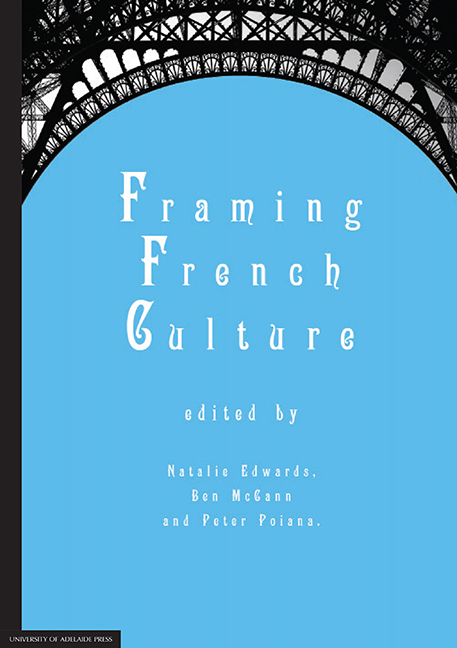Book contents
7 - The return of Trauner: Late style in 1970s and 1980s French film design
from Part 2 - Cultural icons and cinematic framings
Published online by Cambridge University Press: 05 February 2016
Summary
It is a truth universally acknowledged that set designers create the space in which films take place. But, as Alessio Cavallaro reminds us, set designers ‘never simply replicate reality: they always involve the artificial creation of a world … carefully selected to generate a particular aesthetic or mood that draws the audience into the story’.
Hungarian-born production designer Alexandre Trauner (1906-93) fits neatly into this definition. Time and again, in his groundbreaking and highly evocative designs for a series of 1930s French Poetic Realist films — most notably Le Quai des brumes (1938), Hôtel du nord (1938) and Le Jour se lève (1939) — and his monumental, almost mythical sets for Les Enfants du paradis (1945) and Les Portes de la nuit (1946), Trauner created the visual and physical realm of the film and conceptualised sets consistent with the film's mood. Beyond the Hexagon, Trauner's abiding collaborations in Hollywood with directors like Howard Hawks, Orson Welles and, in particular, Billy Wilder (The apartment in 1960, One, two, three in 1961 and Kiss me, stupid in 1964) won him an Academy Award and the status as one of the post-war film industry's most influential and innovative production designers.
Trauner's designs in both these French and American contexts intertwined familiar iconography with stylistic and decorative markers of excess, and covered numerous genres and historical periods, be it biblical epic, Shakespeare adaptation or medieval allegory. Famously, in both France and the US, he distilled an image of Paris even more Parisian than Paris itself — his exemplary iconic representations of the city in Les Enfants du paradis (1945) and Irma la douce (1963) were uniquely his, and today remain a time capsule of the capital's architectural and fashion trends. Throughout his career, Trauner reiterated that the role of the production designer was critical in establishing a visual mood ‘so that the spectator has an immediate grasp of the character's psychology’. Somewhat self-effacingly, he also suggested that the best designer should simply ‘suggérer des choses’. Both these pronouncements — design-as-mirror and design-as-suggestion — consistently inflected his style. By distilling a visual concept from the thematic and psychological concerns of the screenplay, Trauner's skill was to appropriate realism and then simplify, stylise or accentuate it into an expressive, often highly memorable set of designs.
- Type
- Chapter
- Information
- Framing French Culture , pp. 157 - 174Publisher: The University of Adelaide PressPrint publication year: 2015



